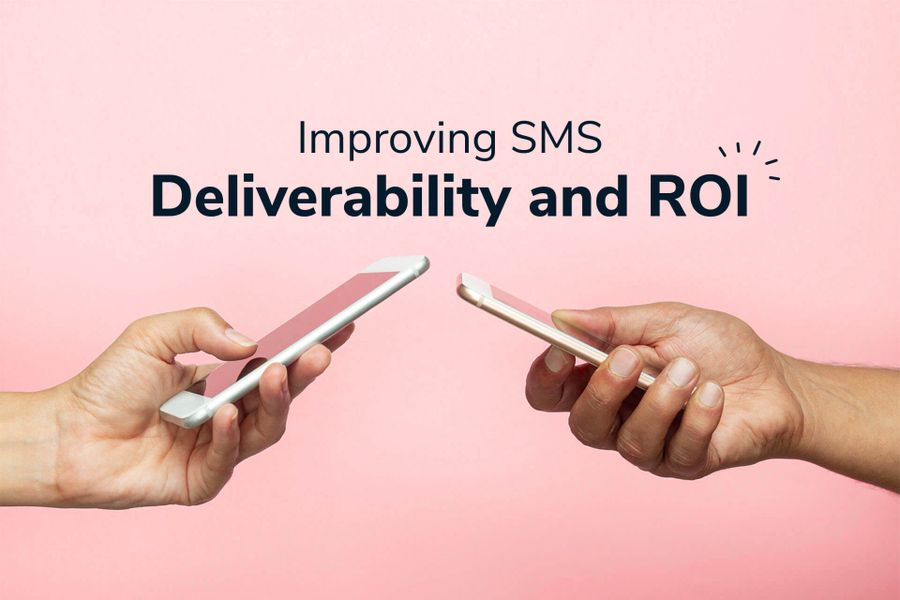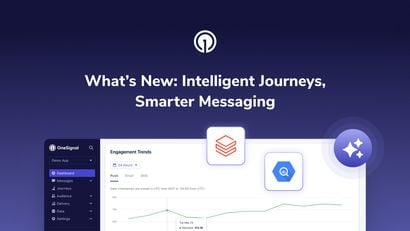Businesses that use 10-digit long codes (10DLC) to send SMS to customers in the United States are facing industry-wide changes that will impact text messaging. These new updates will create a verified system that raises the bar for businesses to send SMS, but will ultimately strengthen the SMS ecosystem by earning users' trust and engagement. Read on to learn more about these changes and understand what steps you should take to access better deliverability and message rate limits.
Long Codes are Becoming More Business-Friendly
Long codes were originally designed for person-to-person (P2P) messaging, so businesses using long codes are subject to carrier filtering that can interfere with message delivery and block SMS. Traditionally, businesses that send SMS have also been limited by a low throughput (defined as message segments per second, or MPS) of 1 MPS. This means that it could take a long time to send messages to large audiences.
Recent application-to-person 10-digit long code (A2P 10DLC) regulations in the United States are making long codes more business-friendly, with increased deliverability and higher throughput of up to 180 MPS. Better deliverability means more customers will receive your texts, leading to higher engagement and improved ROI. In order to take advantage of these improvements, businesses will need to register and identify who they are and what types of messages they are sending.
These changes do not impact short codes, toll-free SMS, or sending SMS to other countries outside of the United States. Hobbyists, independent developers, and very small businesses may not need to register — as of now, exact qualification criteria are still being worked out and specific thresholds have yet to be communicated.
SMS Registration & Earning a Trust Score
The Campaign Registry (TCR) was created to administer the new SMS registration system for US wireless carriers. Companies must register their business and the campaign use case types they will use SMS to communicate with their audience.
TCR will assign companies a Trust Score based on their application. The Trust Score ranges from 0 to 100.
Understanding A2P 10DLC Message Throughput Rates
Your throughput is determined by your Trust Score and the use case. For each use case, the higher your Trust Score, the higher your messaging throughput. You can access the most recent throughput charts for use cases here.
A2P 10DLC Updated Cost Structure
The all-in cost to send SMS in the US is based on a per message cost and the monthly phone number rental cost, and a per message carrier fee at times.
For registered numbers, there is an additional one-time registration fee, a monthly campaign cost (that is dependent on the use case), and a per message long code fee that varies by carrier.
| Fee Type | Interval | Cost |
|---|---|---|
| Registration Fee | One time | $4 |
| Campaign Fee | Per month | Standard: $10/month Low-volume: $2/month Special (Charity): $5/month Special (Emergency Services): $5/month |
| Additional long code fee per carrier¹ | Per message *varies for SMS vs. MMS |
SMS AT&T: $0.002-$0.004 T-Mobile/Sprint: $0.003 Verizon: $0.0025 US Cellular: $0.005 MMS AT&T: $0.0035-$0.005 T-Mobile/Sprint: $0.01 Verizon: $0.005 US Cellular: $0.01 |
¹Many smaller mobile providers in the US are Mobile Virtual Network Operators (MVNOs) who utilize one or more of the major mobile networks for their service. Carrier fees will be based on the primary host network.
What If You Are Already Using a Long Code?
Twilio has integrated with TCR and will submit your information to TCR for review and approval. Twilio is employing a phased onboarding approach and will notify you when you are eligible to register. When you receive your registration notification, you’ll need to submit an application through Twilio’s Trust Hub.
You will need to apply for each campaign use case. So if you are sending order confirmation texts as well as promotional marketing messages, you will need to register both campaign use cases. You can register a phone number as a Mixed use case, but single use case campaigns receive higher throughput and lower carrier fees than mixed use case campaigns. Access a detailed list of use cases here.
Review and registration should be completed within 72 hours. Once you are approved, you will need to link each campaign use case and add a phone number(s) to Twilio’s Messaging Service. You can use your existing numbers — there is no need to buy new numbers. If you have multiple use cases, you will need a different phone number for each use case.
Note: Although OneSignal does not currently support inbound messaging, if you are using webhooks to capture inbound responses, you will need to ensure that the inbound message configuration is applied on your Messaging Service.
Register When Eligible Or Your Messages Will Start to Get Blocked
Carriers are currently in a transition period with a phased onboarding approach. If you have not received an invitation email from Twilio to register, you’re likely not eligible yet. If you are eligible, you should register for better delivery quality and lower filtering risk and to ensure you are sending texts without issue or disruption. If you do not register your company and phone number(s), carriers will increase SMS filtering for unregistered numbers, so you will increasingly see your messages blocked.
For more information, refer to Twilio’s FAQ page. If you have additional questions related to your OneSignal account, we’re here to help you. Reach out to us at support@onesignal.com.
Learn More about SMS Marketing Strategy
Want to start using SMS but not sure where to begin? Check out our SMS eBook to learn fundamental SMS messaging strategies, use cases, best practices, and tips for leveraging SMS across different industries.
Get the Comprehensive Guide to SMS Marketing



